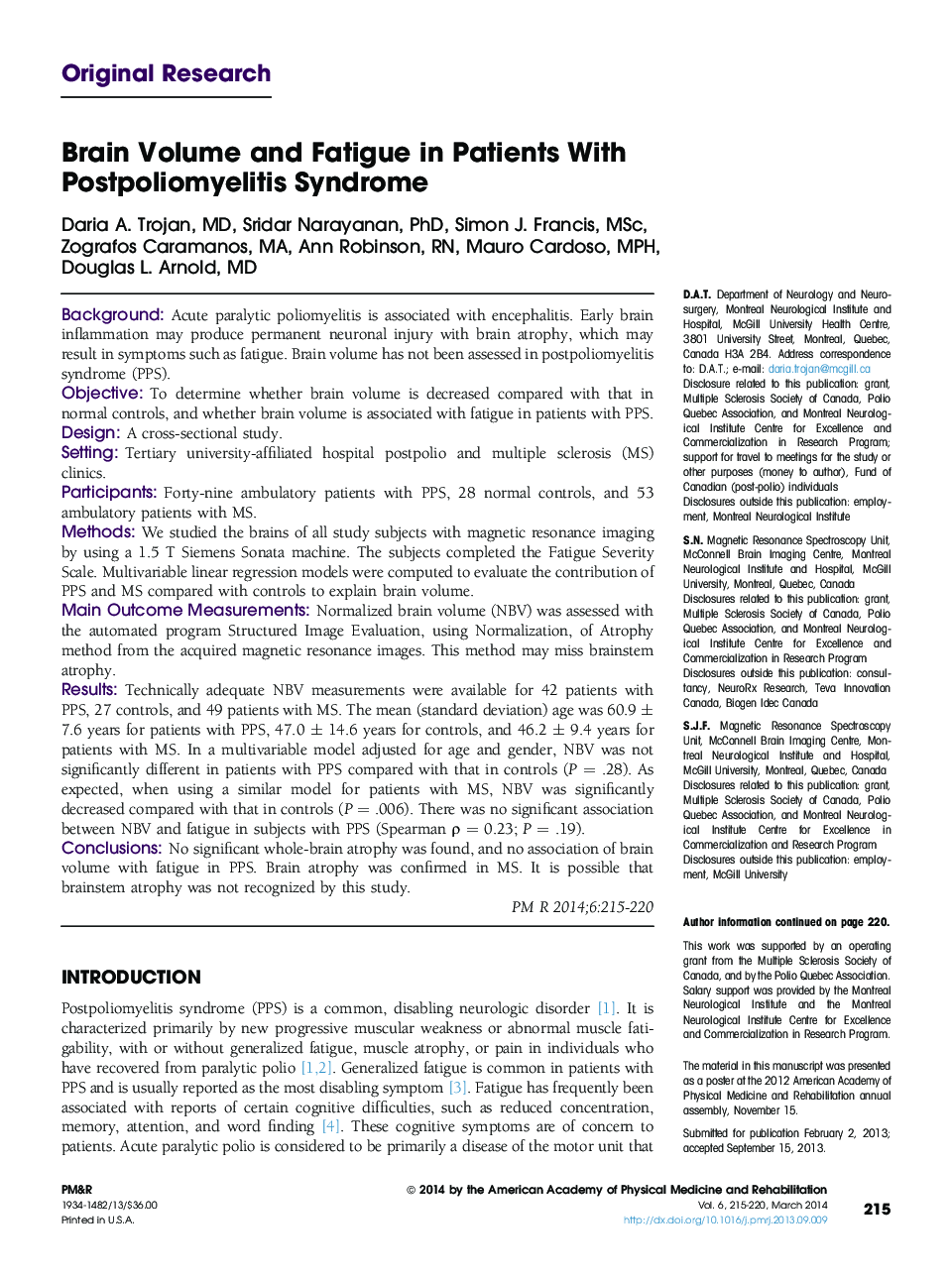| Article ID | Journal | Published Year | Pages | File Type |
|---|---|---|---|---|
| 2707202 | PM&R | 2014 | 6 Pages |
BackgroundAcute paralytic poliomyelitis is associated with encephalitis. Early brain inflammation may produce permanent neuronal injury with brain atrophy, which may result in symptoms such as fatigue. Brain volume has not been assessed in postpoliomyelitis syndrome (PPS).ObjectiveTo determine whether brain volume is decreased compared with that in normal controls, and whether brain volume is associated with fatigue in patients with PPS.DesignA cross-sectional study.SettingTertiary university-affiliated hospital postpolio and multiple sclerosis (MS) clinics.ParticipantsForty-nine ambulatory patients with PPS, 28 normal controls, and 53 ambulatory patients with MS.MethodsWe studied the brains of all study subjects with magnetic resonance imaging by using a 1.5 T Siemens Sonata machine. The subjects completed the Fatigue Severity Scale. Multivariable linear regression models were computed to evaluate the contribution of PPS and MS compared with controls to explain brain volume.Main Outcome MeasurementsNormalized brain volume (NBV) was assessed with the automated program Structured Image Evaluation, using Normalization, of Atrophy method from the acquired magnetic resonance images. This method may miss brainstem atrophy.ResultsTechnically adequate NBV measurements were available for 42 patients with PPS, 27 controls, and 49 patients with MS. The mean (standard deviation) age was 60.9 ± 7.6 years for patients with PPS, 47.0 ± 14.6 years for controls, and 46.2 ± 9.4 years for patients with MS. In a multivariable model adjusted for age and gender, NBV was not significantly different in patients with PPS compared with that in controls (P = .28). As expected, when using a similar model for patients with MS, NBV was significantly decreased compared with that in controls (P = .006). There was no significant association between NBV and fatigue in subjects with PPS (Spearman ρ = 0.23; P = .19).ConclusionsNo significant whole-brain atrophy was found, and no association of brain volume with fatigue in PPS. Brain atrophy was confirmed in MS. It is possible that brainstem atrophy was not recognized by this study.
